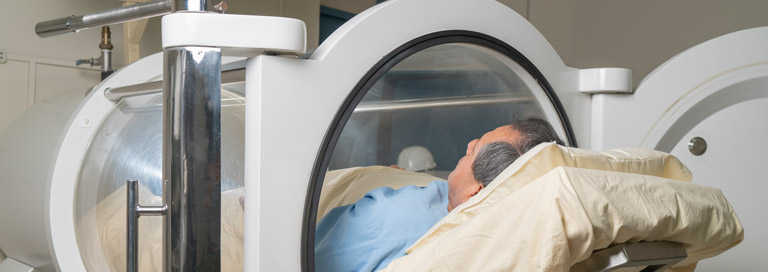The simple act of breathing constantly exposes your lungs to all kinds of viruses, bacteria, particles of pollution, and other harmful foreign matter.
And that means this overlooked organ has evolved its own special immune system to protect itself.
Studies show that, like the rest of your body, your lungs operate two interactive protective systems — an adaptive and an innate immune system.
The innate immune system in your lungs is made up of armies of T cells, B cells, and NK cells, like leukocytes, phagocytes, and macrophages.
These cells, which are released by the alveoli and airway epithelial cells, identify foreign invaders, engulf them, and then eat them. The word phagocytes means “devouring cells” in Greek.
The innate immune system also drives adaptive immunity in your lungs. This is a system of leukocytes with a memory component. And they respond to signals from your innate immune system by producing antibodies for specific protein sequences in specific bacteria and viruses that have attacked your lungs before — and then send out the phagocytes to devour them.
This is why you normally have immunity from colds and flu viruses that settle in your lungs for several weeks after you’ve recovered.
Recent studies at the University of Michigan also show that your lungs, like your gut, are home to a unique community of “good” bacteria — called the lung microbiome. And they have a direct influence on lung immunity.1
The researchers found that the lung microbiota, like the microbiota in your gut, is healthiest when they contain the highest number and the greatest diversity of microbes.
They also found that not only do environmental factors like smoking and pollution affect the diversity balance of your lung microbiome, but levels of antibiotic use also have a profound impact.
Meanwhile, other studies also show
that alveoli have their own specific immune stem, which is regulated by the lung microbiota.2The problem is that these special immune system functions operate optimally only in healthy lungs.
Studies show that the inflammation in the lungs of smokers and people with chronic bronchitis and emphysema — both inflammatory diseases of the airways — causes impaired immune responses.3
Keeping your lungs healthy is one of the most powerful preventative steps you can take to protect yourself against harmful viruses and germs. It’s also the key to restoring your native immunity… the disease-fighting power nature intended for you.
Here at the Sears Institute for Anti-Aging Medicine, I help my patients to build their immunity and strengthen their lungs using hyperbaric oxygen (HBOT).
It’s one of the most effective treatments against Covid that I can recommend. Here’s why…
As you know, Covid invades your respiratory system and causes acute respiratory distress with complications ranging from loss of lung function to blood clots. But HBOT oxygenates your blood, boosting immunity by delivering 100% oxygen to the pulmonary system. This highly oxygenated blood then:4,5,6,7,8,9
- Prevents pulmonary inflammation
- Suppresses respiratory secretions
- Increases lung function
- Inhibits the formation of blood clots
- Destroys germs, microbes, and bacteria
- Increases the number of white blood cells in the body
- Improves the ability of white blood cells to seek and destroy invaders
While HBOT is a proven therapy to prevent Covid, it’s also a highly effective way of treating the condition if you’ve come down with it. And an increasing number of studies back me up…
In one study, researchers placed 35 Covid patients in an HBOT chamber for one hour a day for five days. Some of these individuals had oxygen saturation levels that averaged only 70%. Normal levels are between 95% and 100%, indicating these patients were hours from death.
By the end of treatment, every patient had oxygen saturation levels above 94%.
To Your Good Health,
![]()
Al Sears, MD, CNS
References:
1. Dickson RP, et al. “The lung microbiota of healthy mice are highly variable, cluster by environment, and reflect variation in baseline lung innate immunity.” Am J Respir Crit Care Med. 2018 Aug 15;198(4):497-508.
2. Adami AJ, Cervantes JL. “The microbiome at the pulmonary alveolar niche and its role in Mycobacterium tuberculosis infection.” Tuberculosis. 2015;95(6):651–658.
3. Dickson RP, et al. “The lung microbiota of healthy mice are highly variable, cluster by environment, and reflect variation in baseline lung innate immunity.” Am J Respir Crit Care Med. 2018 Aug 15;198(4):497-508.
4. De Wolde S, et al. “The effects of hyperbaric oxygenation on oxidative stress, inflammation and angiogenesis.” Biomolecules. 2021 Aug 14;11(8):1210.
5. Sanford N, et al. “Efficacy of hyperbaric oxygen therapy in bacterial biofilm eradication.” J Wound Care. 2018 Jan 1;27(Sup1):S20-S28.
6. Hadanny A, et al. “Hyperbaric oxygen therapy effects on pulmonary functions: a prospective cohort study.” BMC Pulmonary Med. 2019;19(148).
7. Imperatore F, et al. “Hyperbaric oxygen therapy prevents coagulation disorders in an experimental model of multiple organ failure syndrome.” Intensive Care Med. 2006 Nov;32(11):1881-8.
8. Baugh M. “HIV: reactive oxygen species, enveloped viruses and hyperbaric oxygen.” Med Hypotheses. 2000 Sep;55(3):232-8.
9. Johns Hopkins Medicine. “Hyperbaric oxygen therapy.” https://www.hopkinsmedicine.org/health/treatment-tests-and-therapies/hyperbaric-oxygen-therapy. Accessed on January 20, 2023.

